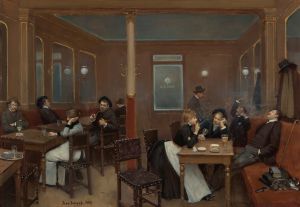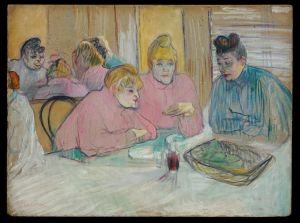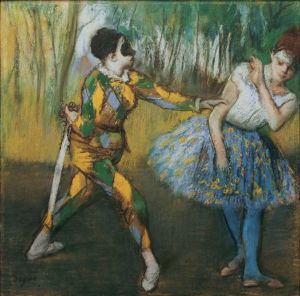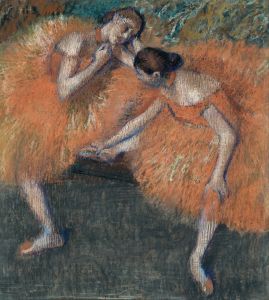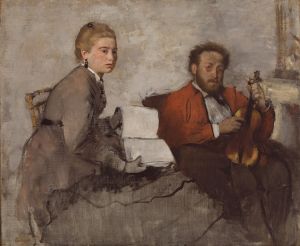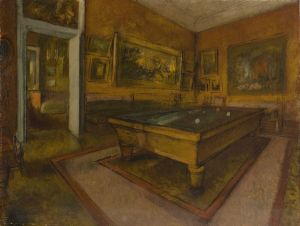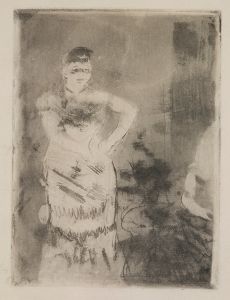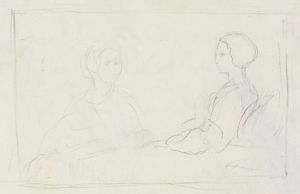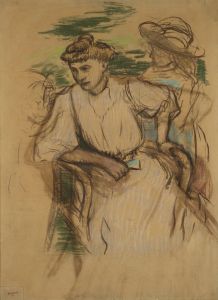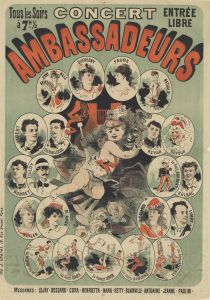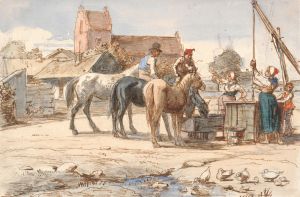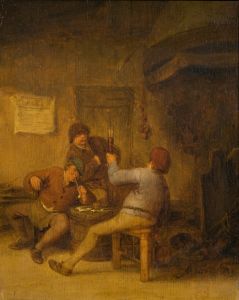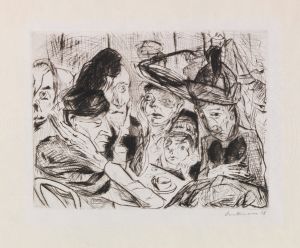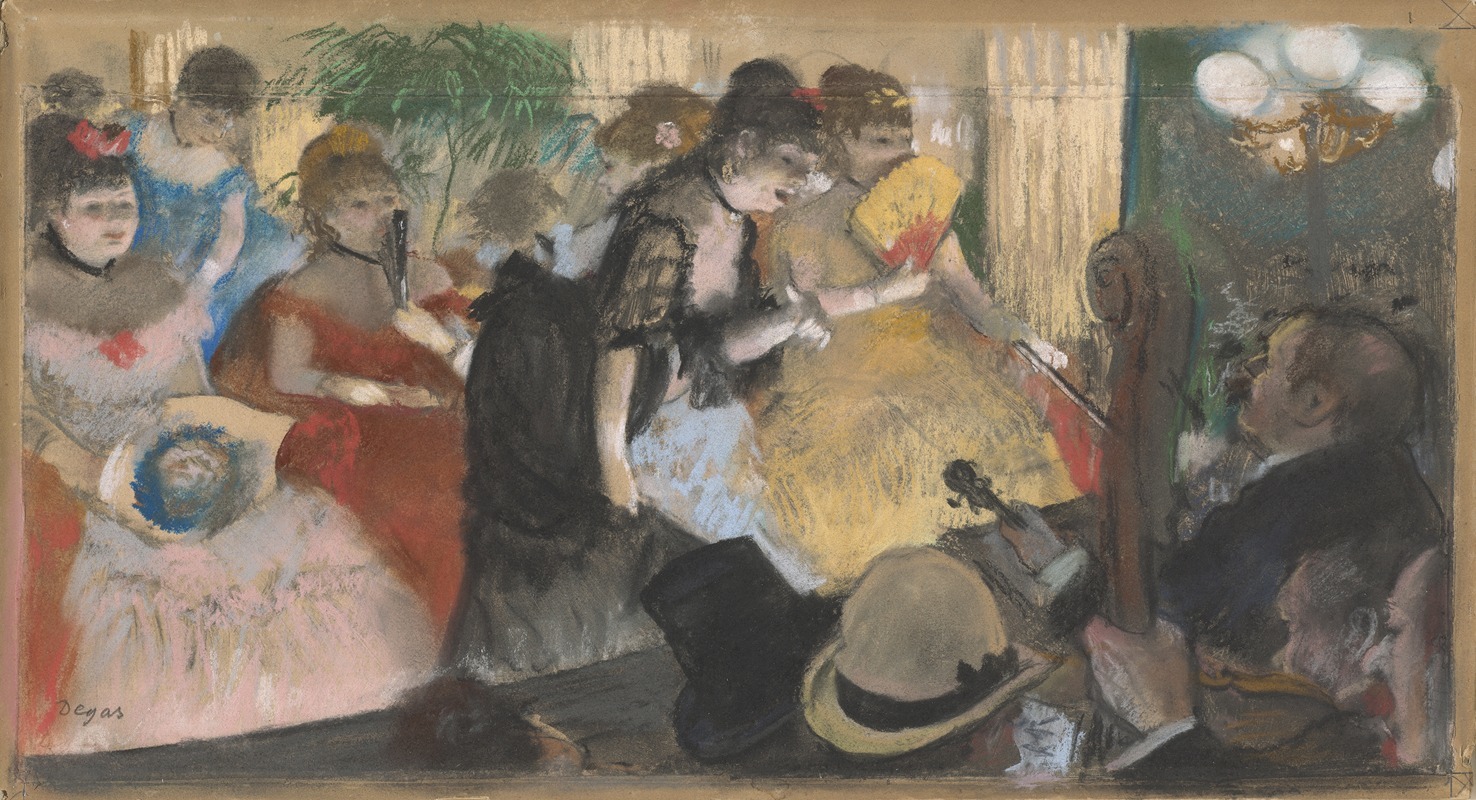
Café-Concert
A hand-painted replica of Edgar Degas’s masterpiece Café-Concert, meticulously crafted by professional artists to capture the true essence of the original. Each piece is created with museum-quality canvas and rare mineral pigments, carefully painted by experienced artists with delicate brushstrokes and rich, layered colors to perfectly recreate the texture of the original artwork. Unlike machine-printed reproductions, this hand-painted version brings the painting to life, infused with the artist’s emotions and skill in every stroke. Whether for personal collection or home decoration, it instantly elevates the artistic atmosphere of any space.
Edgar Degas, a prominent French artist associated with the Impressionist movement, is renowned for his innovative approach to capturing modern life in Paris during the late 19th century. Among his diverse body of work, "Café-Concert" stands out as a significant piece that reflects his interest in the vibrant social scenes of the time. Although Degas is often celebrated for his depictions of ballet dancers, his exploration of other facets of Parisian life, such as café-concerts, offers a broader understanding of his artistic pursuits.
The café-concert was a popular form of entertainment in Paris during Degas's lifetime, combining elements of a café and a concert hall. These venues were lively social hubs where people gathered to enjoy music, performances, and refreshments. They were emblematic of the cultural dynamism of Paris and provided a rich source of inspiration for artists like Degas, who were keen to capture the essence of contemporary urban life.
In "Café-Concert," Degas employs his characteristic style, which blends elements of Impressionism with a keen sense of observation and detail. The painting is notable for its composition and the way it captures the atmosphere of a bustling café-concert. Degas's use of light and shadow, as well as his attention to the nuances of human interaction, are evident in this work. The painting is a testament to his ability to convey the energy and complexity of social gatherings.
Degas often used a variety of media in his works, and "Café-Concert" is no exception. His technique involved a combination of pastels and oils, which allowed him to achieve a rich texture and depth in his compositions. This approach enabled him to capture the fleeting moments and movements of the figures in the scene, a hallmark of his style.
The subject matter of "Café-Concert" reflects Degas's interest in the everyday lives of Parisians. Rather than idealizing his subjects, he portrayed them with a sense of realism and immediacy. This focus on ordinary people and their interactions was a departure from the more traditional subjects of historical or mythological themes that dominated the art world at the time.
Degas's work on café-concerts also highlights his fascination with the interplay of public and private spaces. In these venues, individuals from various social backgrounds mingled, creating a microcosm of Parisian society. Degas captured this dynamic environment with a perceptive eye, offering viewers a glimpse into the social fabric of the era.
"Café-Concert" is part of a broader series of works by Degas that explore similar themes. His interest in capturing the essence of modern life extended beyond the confines of the café-concert, encompassing other aspects of urban existence such as the ballet, the racetrack, and the opera. Through these works, Degas provided a comprehensive portrayal of the multifaceted nature of Parisian society.
In summary, Edgar Degas's "Café-Concert" is a significant work that exemplifies his interest in modern life and his innovative approach to capturing the vibrancy of Parisian social scenes. Through his masterful use of composition, technique, and subject matter, Degas offers a window into the lively world of the café-concert, reflecting the broader cultural and social dynamics of 19th-century Paris.





